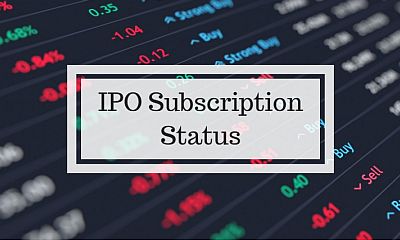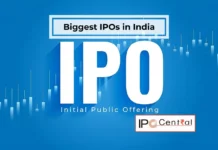
Welcome to the IPO Subscription Status page, where you can access a comprehensive overview of subscription activity for public equity share offers on India’s largest stock exchanges, NSE and BSE. These exchanges provide real-time updates on IPO subscription status when offers are open for subscription. However, tracking the overall demand in the primary market often involves navigating through multiple pages. This is where IPO Central steps in, offering a centralized hub for subscription details of both mainboard and SME IPOs. Bid farewell to the inconvenience of checking various sources, and discover all the information you require at one convenient location.
Mainboard IPO Subscription Status Live (X no. of times)
SME IPO Subscription Status Live (X no. of times)
Naturally, it’s important to highlight that this information is continually updated in real time, ensuring that investors have access to the latest IPO subscription status on this dedicated page. The IPO live subscription status 2026 featured here encompasses both BSE IPO subscription status andNSE IPO subscription status.
Read Also: Highest IPO Subscription in India
IPO Subscription Categories
Within the realm of stock markets, investors assume a myriad of profiles, spanning from modest to substantial. This diversity extends to the domain of IPOs, resulting in an inherent disparity within the market. Remarkably, even the seemingly less influential financial entities may possess greater resources than the most affluent individual investors.
In response to this dynamic environment, the market regulatory body SEBI has established distinct IPO investor classification in the stock markets. Broadly speaking, there exist five primary categories for IPO subscription: Qualified Institutional Buyers (QIBs), Non-Institutional Investors (NIIs), Retail Investors, Employees, and Shareholders. Amongst these classifications, the first three hold the highest importance, as not all IPO companies earmark shares exclusively for employees or shareholders of parent companies.
QIB (Qualified Institutional Buyer) – This elite group encompasses Financial Institutions, FIIs, Mutual Funds, and Banks. A minimum of 50% of IPO shares are reserved for QIBs, reflecting their prominence.
NII (Non-Institutional Investor) – NIIs represent a diverse spectrum, including Individual Investors (with applications surpassing INR 200,000), NRIs, Body Corporates (Companies), and Trusts. Notably, 15% of the IPO offer size caters to NIIs.
Individual Investor – The essence of individual participation is encapsulated within RII. This category embraces Individual Investors and NRIs with applications of INR 200,000 or above. Depending on the company’s profitability, either 10% or 35% of IPO shares are earmarked for RII.
Read Also: Highest SME IPO Subscription in 2026 in India
Why the Latest IPO Subscription Status Matters?
Monitoring the latest IPO subscription status holds significant importance for investors, driven by several compelling reasons:
- Prioritizing IPO Applications: When faced with multiple concurrent public offerings, tracking the current IPO live subscription status empowers investors to strategically prioritize their IPO applications. This informed approach allows them to make calculated decisions about allocation preferences.
- Potential for Listing Gains: Elevated demand levels typically signal the potential for more favorable listing gains. This dynamic sets off a positive feedback loop wherein the anticipation of enhanced gains spurs greater investor demand.
- Influence on Grey Market Prices: The levels of IPO subscription often exert an influence on grey market prices. Grey market trends take cues from subscription levels, offering insights into market sentiment and demand.
- HNI Investment Decision: High Net Worth Individuals (HNIs) gauge the overall demand for an IPO to assess whether to allocate funds for a subscription. The subscription status helps them make informed funding decisions.
- Guidance for Retail Investors: Retail investors who might be undecided often look to High Net Worth Individuals (HNIs) and Qualified Institutional Buyers (QIBs) for cues. These sophisticated investors possess superior market intelligence and resources, making their actions a valuable indicator for retail investors.
The significance of staying updated on the latest IPO subscription status is evident from its multifaceted impact on allocation strategies, potential gains, market sentiment, and investment decisions.
How long is the IPO subscription active?
The duration of IPO subscription typically spans 3 days for Mainboard IPOs. However, this period may be extended if the public offer fails to garner sufficient demand. The upper limit for an IPO to remain open for subscription stands at 10 working days.

IPO Subscription Status FAQs
How many categories of investors are there in IPO subscription?
There are five categories for IPO subscription, i.e., QIB, NII, Retail, Employee, and Shareholder categories.
How is IPO Subscription status helpful for HNIs?
HNI investors fund their IPO application through short-term loans and a high IPO subscription status tells them about the extent of listing gains.
How long is IPO subscription active?
Typically, mainboard IPOs in India remain open for subscription for 3 working days. This timeframe can be increased to a maximum of 10 working days to allow a full subscription.
Which is the biggest investor category in IPOs?
QIBs are sold at least 50% of all shares offered in an IPO, making it the biggest and most important among investor categories.







































I am interested
You have done in depth analysis.